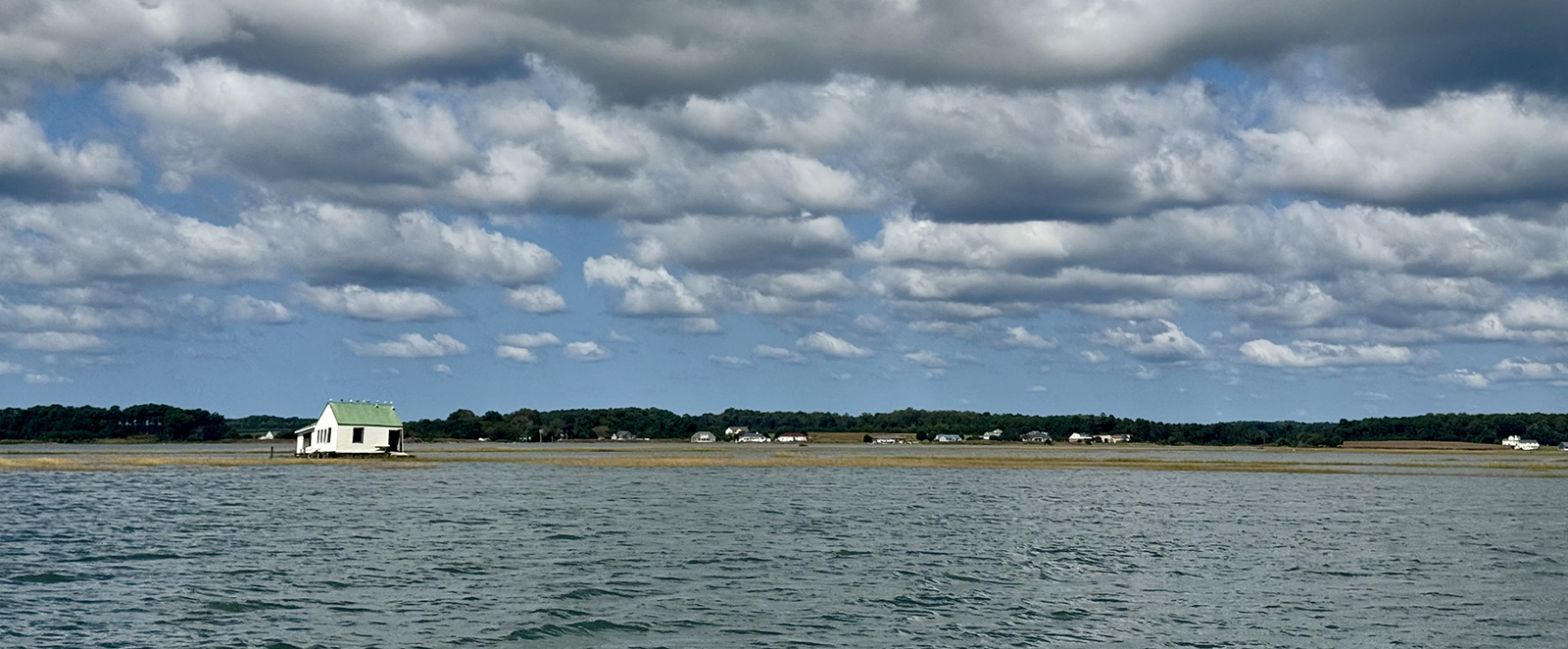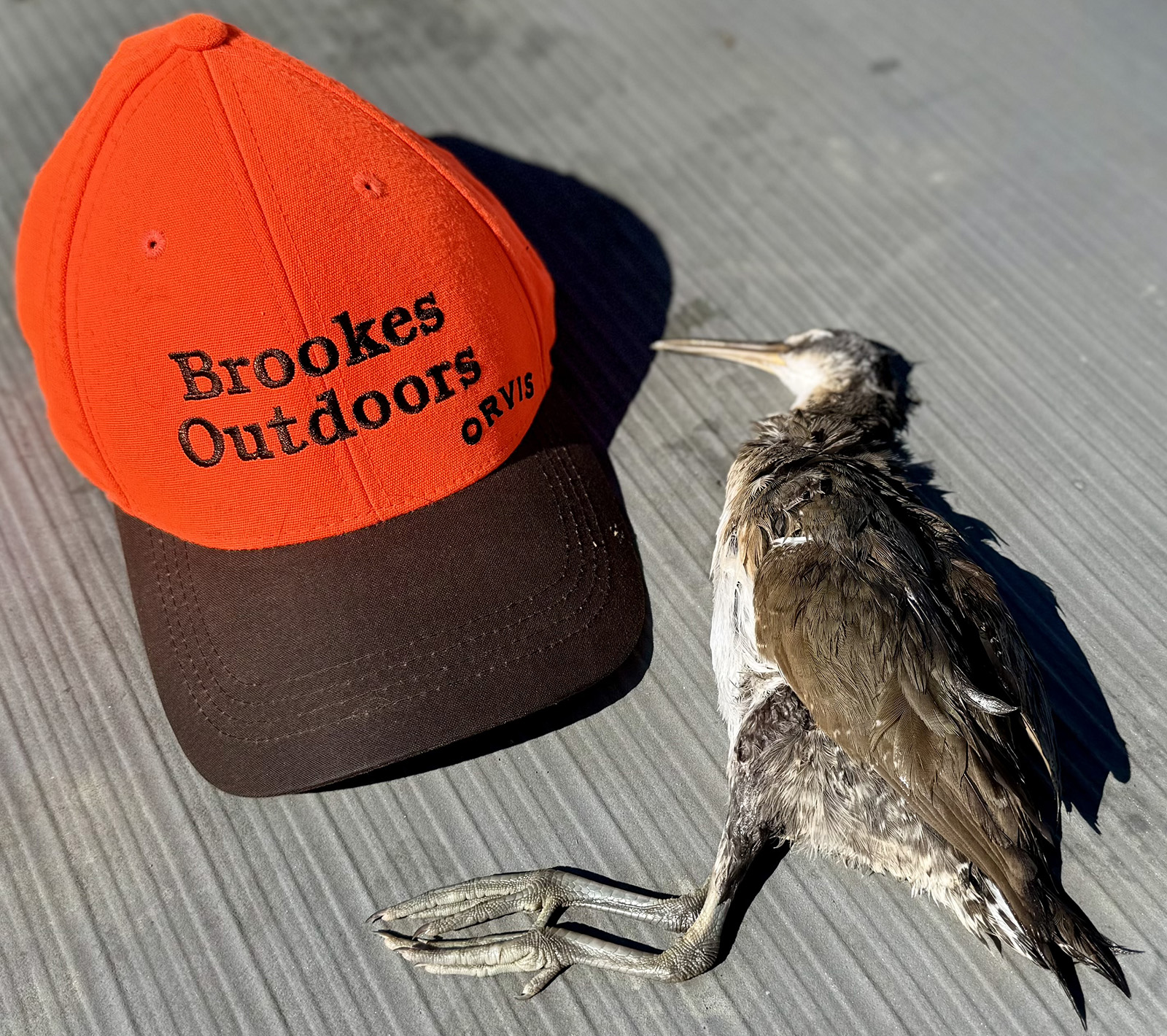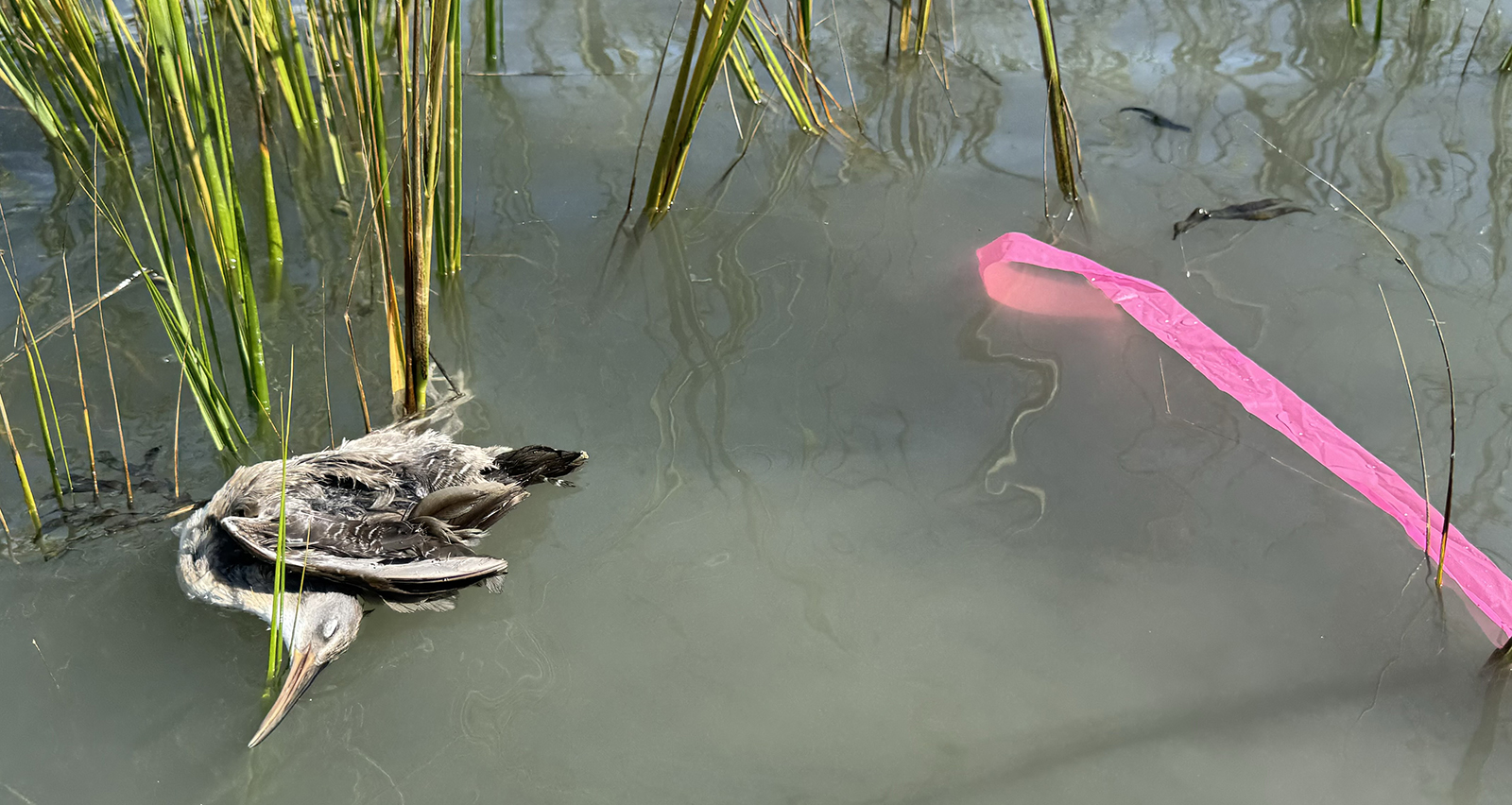By Peter Brookes
Photos by Peter Brookes
Whoever came up with the idea of hunting clapper rail was clearly inspired by Mary Shelley’s famous book, Frankenstein. Like Frankenstein’s Monster, clapper rail hunting is an eerie assembly of both upland and waterfowl hunting.
You can almost see a mad hunter muttering, “Heh, heh, heh, let’s take some upland hunting… but, no, how about some waterfowling, too?!” as he stitched up his scheme for hunting rail in a dreary, dank, deserted blind on Virginia’s Eastern Shore.
Amazed at his creation, he throws his head back and in a bone-chilling laugh shrieks: “It’s alive!”
OK, well, maybe not. But Halloween was just upon us and that was my initial impression of rail hunting, which I did for the first time recently in the saltwater marshes off of Chincoteague Island with outdoor colleague, Captain Pete Wallace.

The saltwater marshes where we found the clapper rails.
Despite my nightmarish notions, it was great fun.
That said, I do sense that rail hunting isn’t well known based on the confused looks and comments I received from fellow hunters and fishers, who, under furrowed brows, asked quizzically, “You’re hunting what?!”
So let’s start with the basics.
The clapper rail—aka marsh hens to the locals—is a migratory bird that inhabits the saltwater of Virginia’s Eastern Shore of the Chesapeake Bay. (The Old Dominion also has the sora and Virginia rail, which live in freshwater.)
While exact numbers are hard to come by, the clapper rail population is considered robust.
The rail is a medium-sized bird with a longish beak, smallish wings, and longish legs. Without webbed feet, they aren’t strong swimmers, but they make up for it by not being strong fliers, either. All kidding aside, being on terra firma is their thing.

A typical clapper rail (hat for size).
Let’s just say: The rail isn’t exactly the top of the avian food chain.
A rail hunt is arranged around the tide table with high tide providing the best hunting conditions; a full moon is a bonus. The high water reduces the available land, marsh grasses (e.g., cordgrass), and other cover rail might use during lower water.
During my one-day hunt, that meant a leisurely Oh-900 start—nice!
Expect a boat ride to the hunting area and be prepared to get wet. While you can shoot rail from a boat that isn’t under power (in the old days, folks poled the marshes with specially designed skiffs), I decided I wanted to wade to flush birds into the air.
Thankfully, the water was a comfortable 70-plus degrees that day.
While keeping an eye out for birds—they don’t generally flock up—we would most often pilot the boat into the end of a stretch of marsh grass and disembark. With a splash, you and a hunt partner are off pushing birds like on an upland hunt.
The rails are reluctant fliers and will swim away to escape if necessary, but really prefer to hide. And they secrete well, sitting low in the water and blending in with their dark, camouflaging plumage.
We had several birds bust behind us after moving through an area.
When birds do flush, they soundlessly fly away just above the water’s surface. It’s not like waterfowl, which use noisy webbed feet and powerful wings—often with a quack or honk—while getting airborne.
Rails are super stealthy, even ninja-like.
If you down one, watch that spot until you can retrieve it. It’s easy to lose track of a rail. Some hunters throw a ribbon of brightly colored tape, anchored by a fishing weight or piece of wood, to where they saw the bird go down.

Marking a downed bird is a good idea.
If you’re on your toes, a limit of rails is certainly attainable. While you might need to put in some walking—my smartwatch had me walking about five miles—our party of two hunters took a single-hunter’s limit of rail in about four hours. It’s a great way to get your daily steps in.
A couple of other things about rail hunting. Virginia rail has two split seasons, currently into September-October and then November-December. Check the Department of Wildlife Resources’ (DWR) Migratory Game Bird digest for specific dates.
You’ll also need a Virginia hunting license and to register for a Virginia Harvest Information Program (HIP) number (it’s free!). Luckily, all of that can be acquired on the DWR licensing portal at one time.
Be sure you know your bag limits. For a cautionary tale, check out this 2019 DWR Conservation Police Officer rail poaching story—the largest poaching case on the Eastern Shore for 25 years.
Don’t be those guys.
Solid blaze orange/pink colored clothing isn’t required to hunt rail, but as with upland hunting where a few hunters may be moving about, I think it’s a good idea to wear some to prevent a mishap.
And while solid blaze-colored clothing isn’t required, non-toxic shot is.
I used a 12-gauge waterfowl shotgun, but, in retrospect, I could’ve easily gone with a 20-gauge scattergun to hunt rail. I opted for 7-shot shells with a relatively open choke, but I think 8-shot would’ve done the job, too.
It doesn’t take much to fold a rail.
Another point: You may be wading in water that may come to, or above, your waist, depending on the tide, your height, and the marsh bottom terrain, so I don’t recommend bringing a high-end upland gun to hunt rail in the harsh saltwater environment.
Having to get back to Northern Virginia for my teenage son’s football game that night—which I did!—I gave my bagged rails to a hunter from Massachusetts. Unfortunately, I don’t know how they cook up, but I hear they’re quite tasty.

Rail hunting is certainly different, but also a lot of fun.
Lastly, be careful out on the water: The saltwater marshes along the shore have tides, tidal currents, and deep creeks that run through them. No need for a hunt that includes a hat-floating moment.
I’m not sure how the rail hunting might be during the November-December split, but being out in the Chesapeake marshes of Virginia’s Eastern Shore for some wing shooting on a glorious, sunny September day was a great way to start fall.
I fell hard for rail hunting–and can’t think of a better way to kick off Virginia’s fall hunting season.
Dr. Peter Brookes is an award-winning outdoor writer at Brookes Outdoors. He plans to chase Virginia woodcock this fall in drier places. BrookesOutdoors@aol.com


